Master essential Japanese dining etiquette and table manners with this guide. We’ll share our best tips on mealtime cultural practices, chopstick use, sushi etiquette, and drinking customs for an enjoyable dining experience.
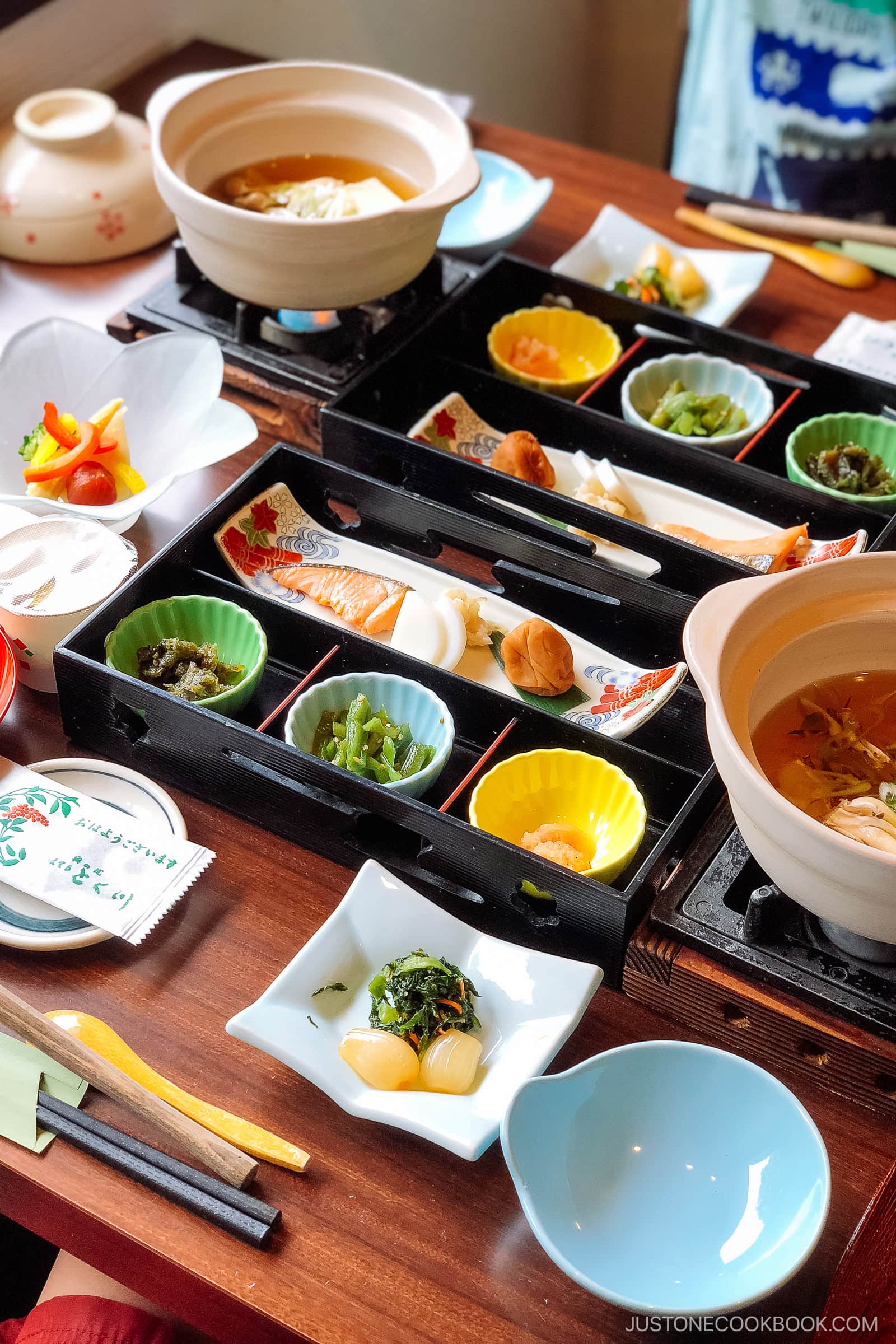
Japanese dining customs may seem intricate at first glance. However, learning a few key practices can help you avoid awkward moments and show genuine respect, whether you’re traveling in Japan, dining in a Japanese home, or out with friends at a restaurant. In this guide, we’ll cover essential Japanese dining etiquette and table manners so you can dine with confidence and cultural grace.
Wish to dive deeper into Japanese food culture? Read What is Washoku?, How to Plan and Serve One Soup Three Dishes (Ichiju Sansai), and Bites and Booze: Navigating the Izakaya Dining Culture next!
Japanese Mealtime Gratitude and Respect
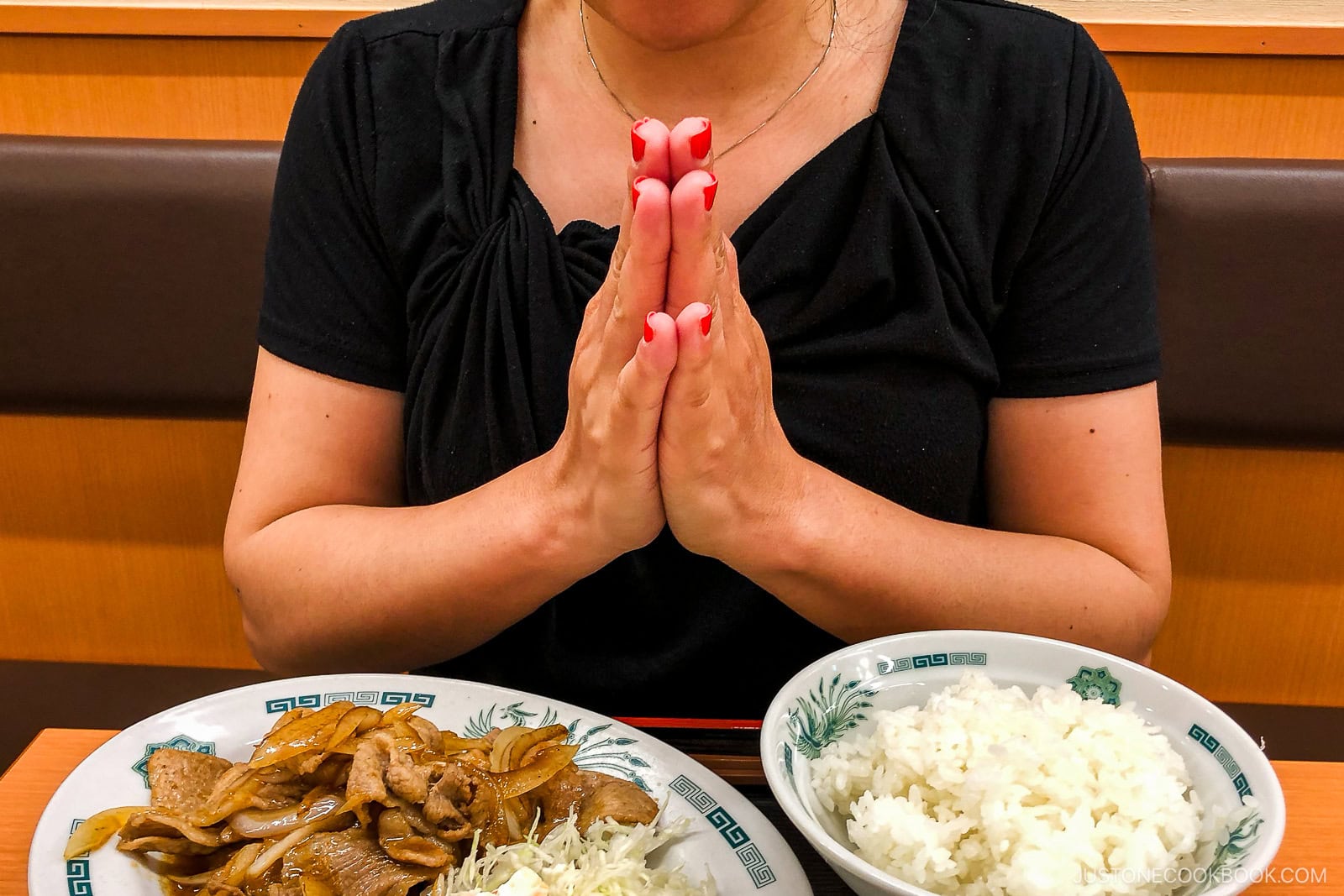
In Japanese culture, it’s crucial to practice mindfulness when sitting down to enjoy a meal. Let’s cover the basic customs that you’ll want to understand when dining in a Japanese setting.
1. Table Seating
- The seat farthest from the entrance is considered the most honored.
- Let elders or senior guests sit first before taking a seat.
- Wait until everyone is seated before beginning to eat.
2. Starting the Meal
- When ready to eat, say “itadakimasu” (いただきます), optionally with your hands pressed together at the heart center.
- This means “I humbly receive.”
- It’s a mindfulness practice that’s similar to saying grace.
- It expresses appreciation to everyone and everything that made the meal possible.
- Wait until everyone is ready to begin, then say this expression together to signal the start of the meal.
Itadakimasu and Gochisou-sama: A Deeper Meaning
Mealtime expressions with gassho hands pressed together are deeply rooted in Buddhism, one of Japan’s main religions. They reflect gratitude and reverence for everyone who contributed to the meal—the farmers and fishermen who harvested the ingredients, the truck drivers and grocery clerks, the parents or host who procured the food, and the chef or home cook who prepared the meal. They are also gestures of appreciation for the bounty of nature’s, where the food grew and flourished.
3. Showing Respect for the Food
- Finish your meal completely, leaving no grains of rice behind as a sign of appreciation.
- Take only what you need. It’s considered wasteful and disrespectful to serve yourself an excessive amount of food or condiments, then leave some uneaten.
- If you can’t finish everything, neatly gather any remaining food to one side of your plate instead of leaving it scattered.
4. Ending the Meal
- Place your utensils down, bring your hands together again, and say “gochisou-sama deshita” (ごちそうさまでした) when you’re finished eating.
- This means “thank you for the delicious meal.”
- Saying this expression signals the end of the meal.
Oshibori: Using Japanese Wet Towels
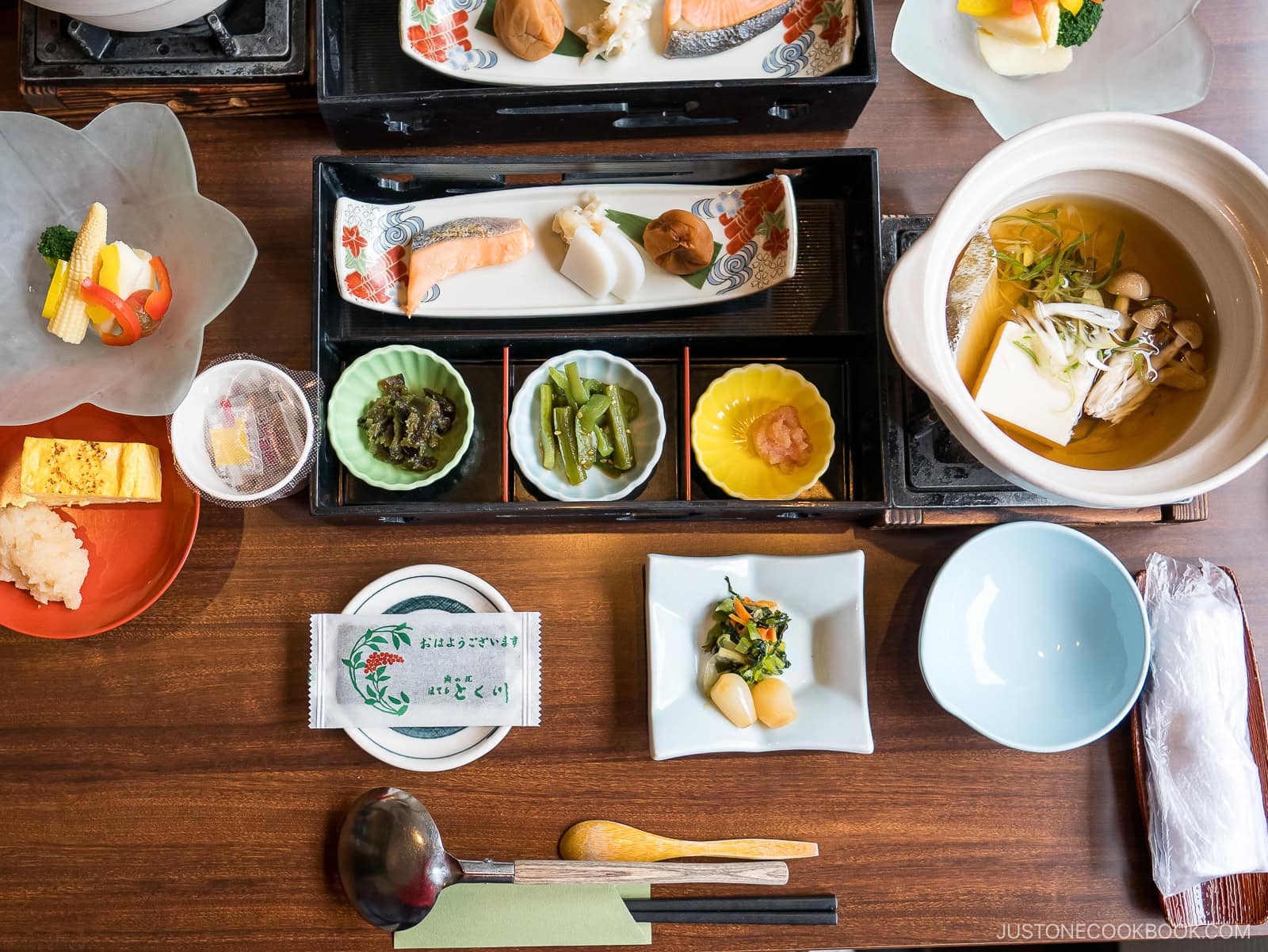
You may encounter oshibori (おしぼり) at Japanese restaurants or on your flight to Japan. These are wet towels, either the disposable type or towels that come piping hot or cold, depending on the season. Here’s how to use them:
- Use oshibori to clean your hands before a meal. If you’re in a high-end restaurant, they may refresh it with a new one at the end of a meal.
- Don’t wipe the sweat from your face or neck with oshibori. This is considered inappropriate. Also, don’t use it to wipe food remnants from your chopsticks.
- Fold your used oshibori neatly and place it to your right (if right-handed, or left if left-handed), or on the tray it came on. Feel free to wipe your hands with it during the meal.
- Keep your oshibori clean. If you accidentally spill liquid or food on the table, ask the waiter for paper napkins to wipe it up, or use tissue paper if you have it on hand.
Essential Chopstick Etiquette Rules
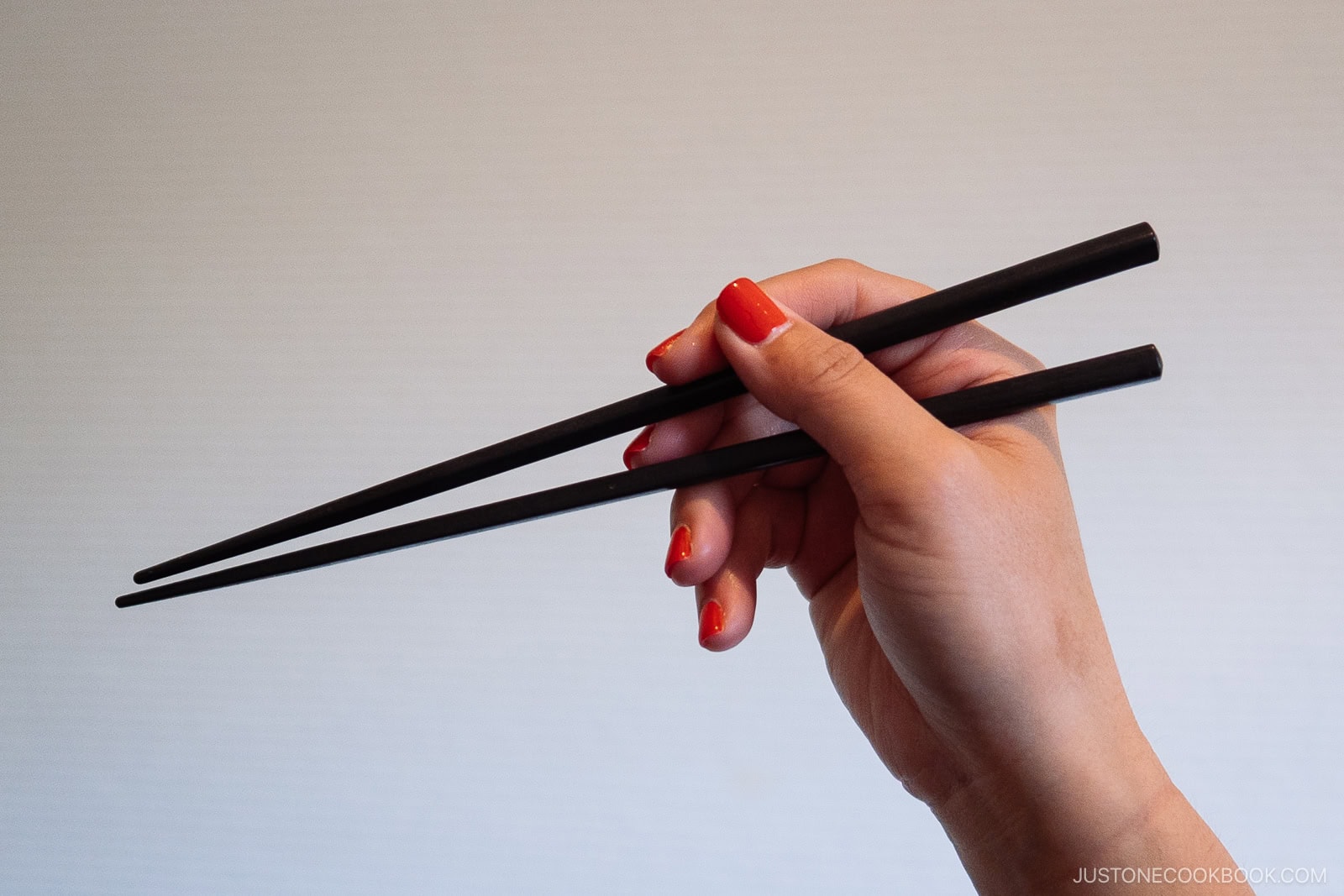
Chopsticks (ohashi, お箸) are the primary utensil for typical Japanese meals. While Japanese households and restaurants also rely on forks and knives everyday, you can count on chopsticks to appear when enjoying any washoku (Japanese cuisine) meal.
Do we place chopsticks horizontally or vertically?
In Japanese culture, chopsticks are laid horizontally in front of the diner, with the tips pointing to the left.
- It’s considered rude for chopstick tips to point at the person sitting across from you, especially when they have been used.
- Chopsticks serve as a boundary between you and the food. Ancient Japanese believed that chopsticks separated the food provided by the gods (pure) from humans (impure).
- Place chopsticks horizontally in front of you when not in use. Set the tips pointing toward the left (if you’re right-handed) on a chopstick rest or folded wrapper, or set them directly on the food tray or table.
Below, we’ll discuss what to avoid when using chopsticks and some best practices to keep in mind.
1. Never stick chopsticks upright in a rice bowl
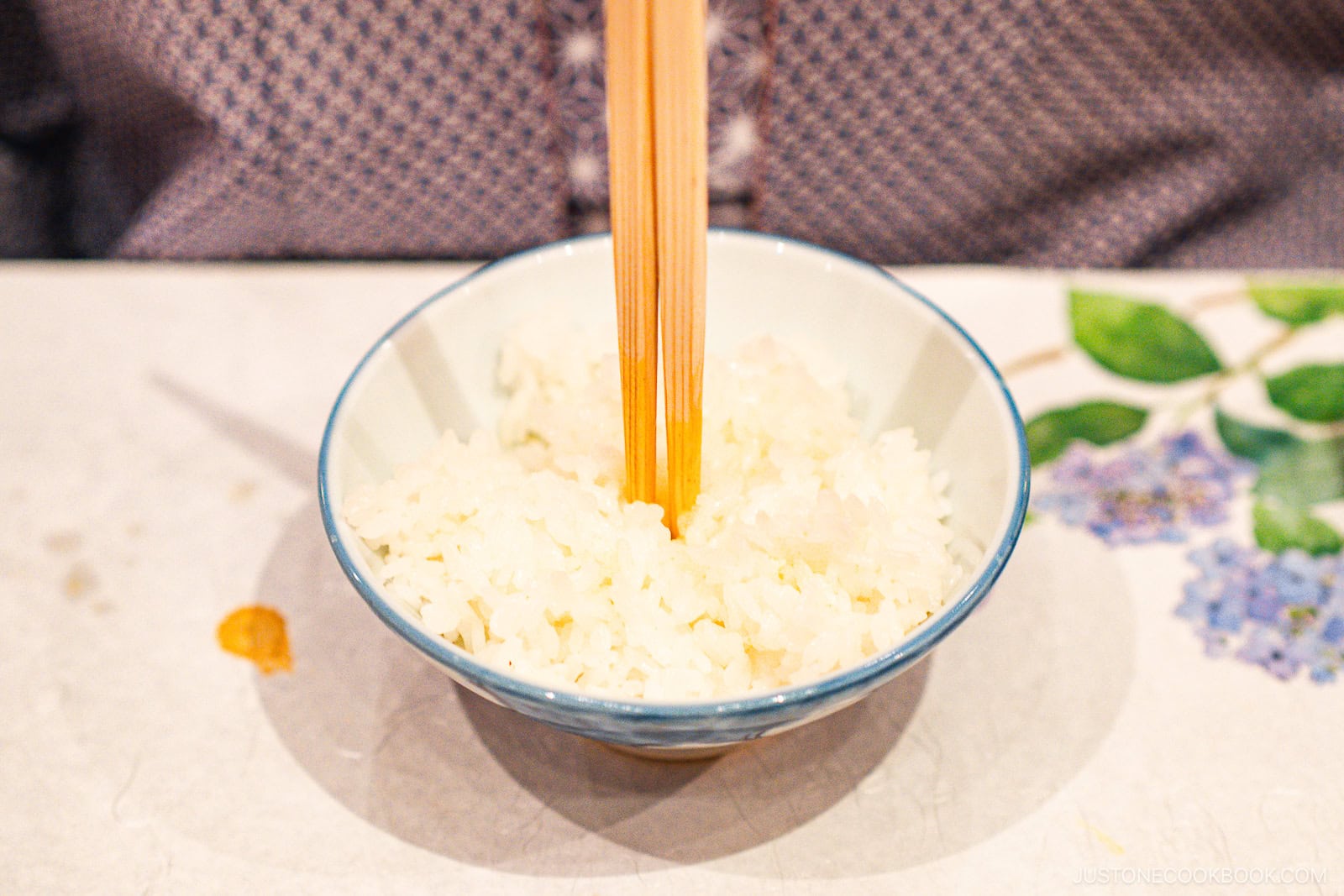
- Called tate-bashi (立て箸) in Japanese
- This is considered bad luck, as it resembles the way rice is offered to the deceased during funerals.
- Place your chopsticks horizontally on a chopstick rest (hashi-oki, 箸置き) or in the chopstick’s paper wrapper when you’re finished eating. You may also set them directly on your food tray or table. Don’t place them across any bowl or plate.
2. Do not pass food chopstick-to-chopstick

- Called hiroi-bashi (拾い箸) in Japanese
- It’s taboo, as it’s similar to a ritual in Japanese funerals where bones from the cremated remains are picked up with chopsticks and placed in the urn.
- If you need to share food, place it directly on the other person’s plate.
3. Do not spear your food
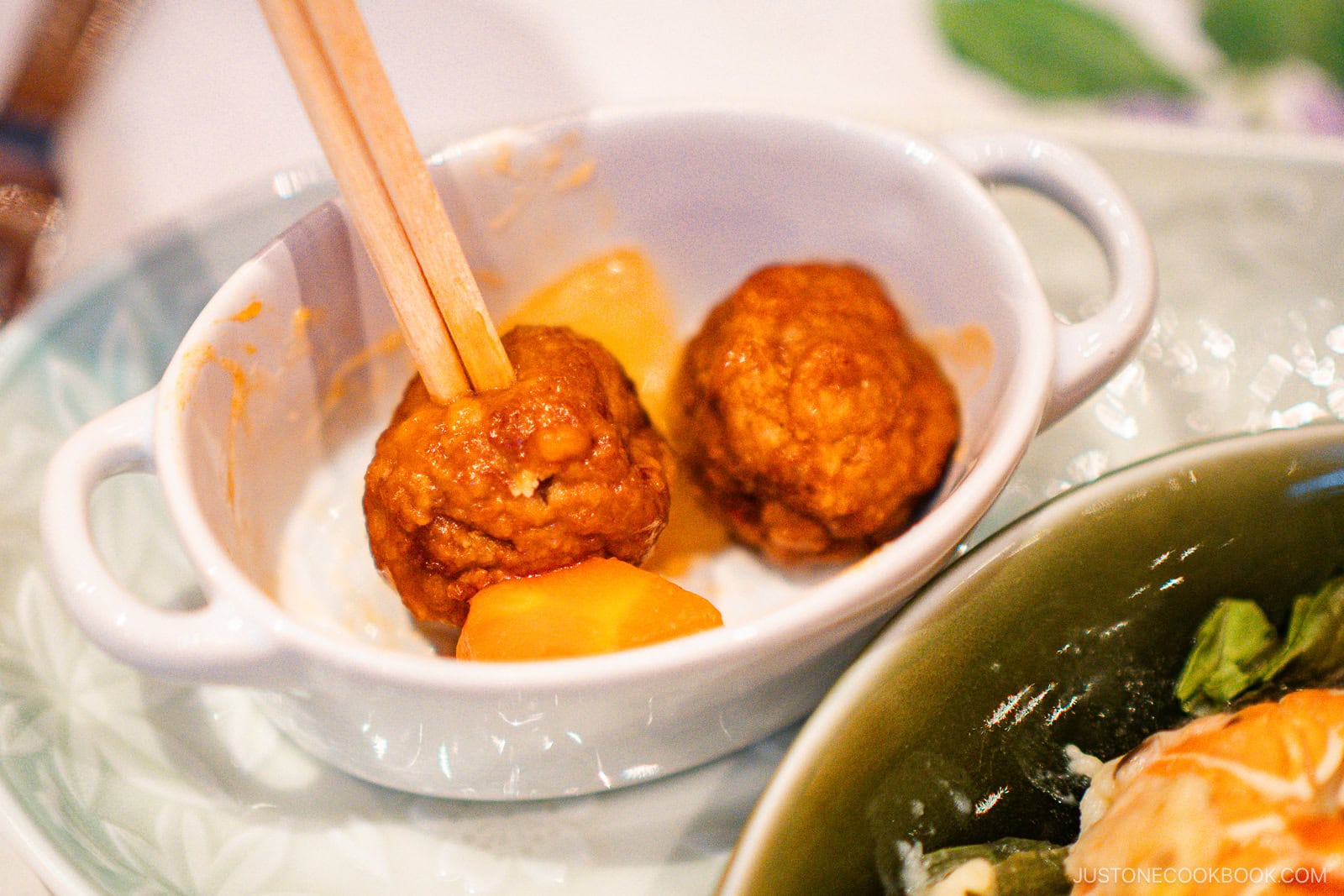
- Called sashi-bashi (刺し箸) in Japanese
- It’s considered disrespectful to the food to stab or poke it.
- Use chopsticks like tongs to pick up food. If you struggle with a slippery item, it’s polite to lift your plate or bowl closer to your mouth.
4. Do not point with chopsticks
- Also called sashi-bashi (指し箸) in Japanese, with a different kanji character
- It’s seen as rude to point at someone or gesture with chopsticks.
5. Do not use personal chopsticks for communal dishes
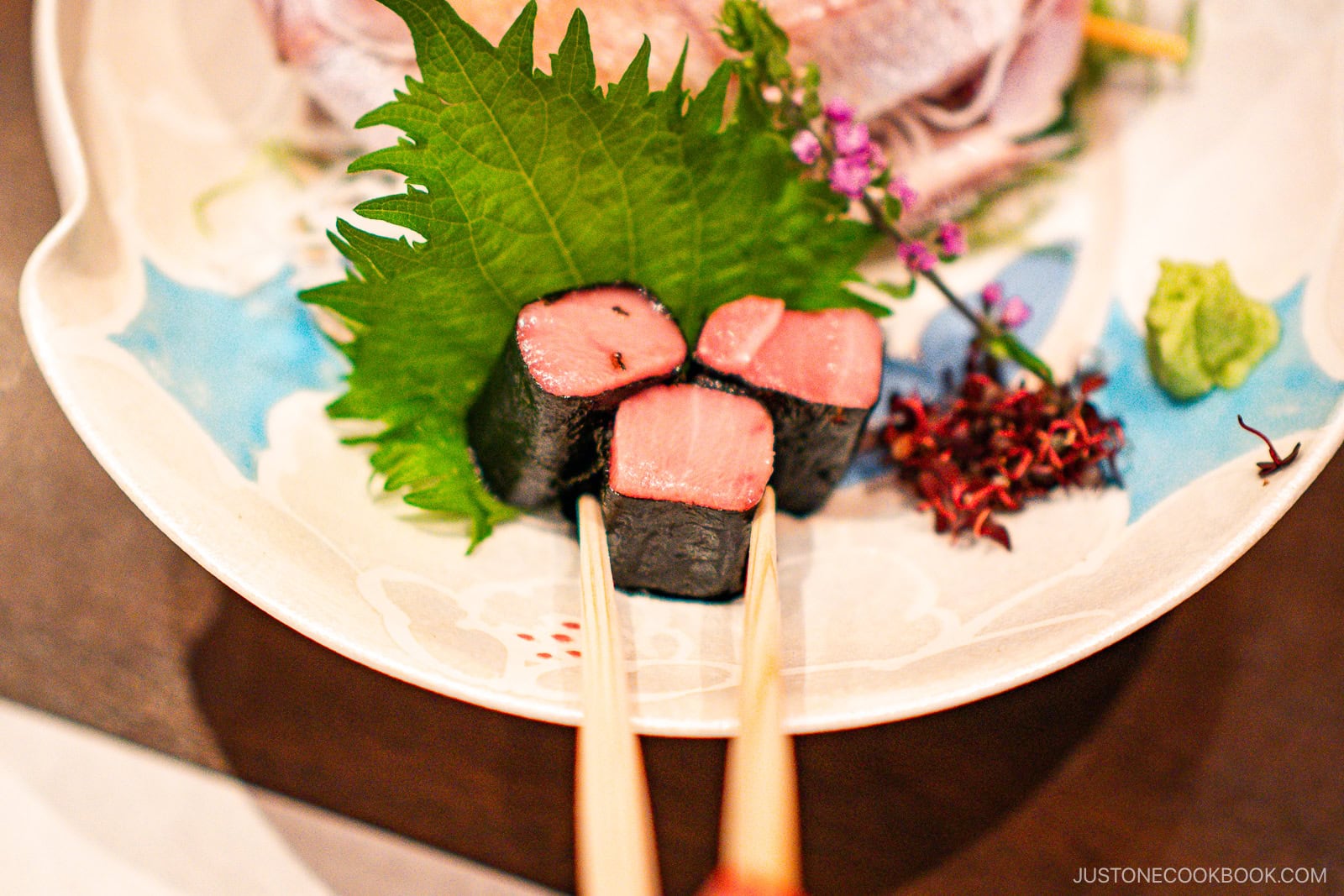
- It’s considered bad hygiene and inconsiderate to your fellow diners to use your personal chopsticks on shared plates.
- Always use designated communal chopsticks to serve yourself when dining with others.
- Diners may use the clean, opposite end of personal chopsticks to pick up food in a casual setting with family and friends. When in doubt, watch to see what others do.
6. Do not lick or chew your chopsticks
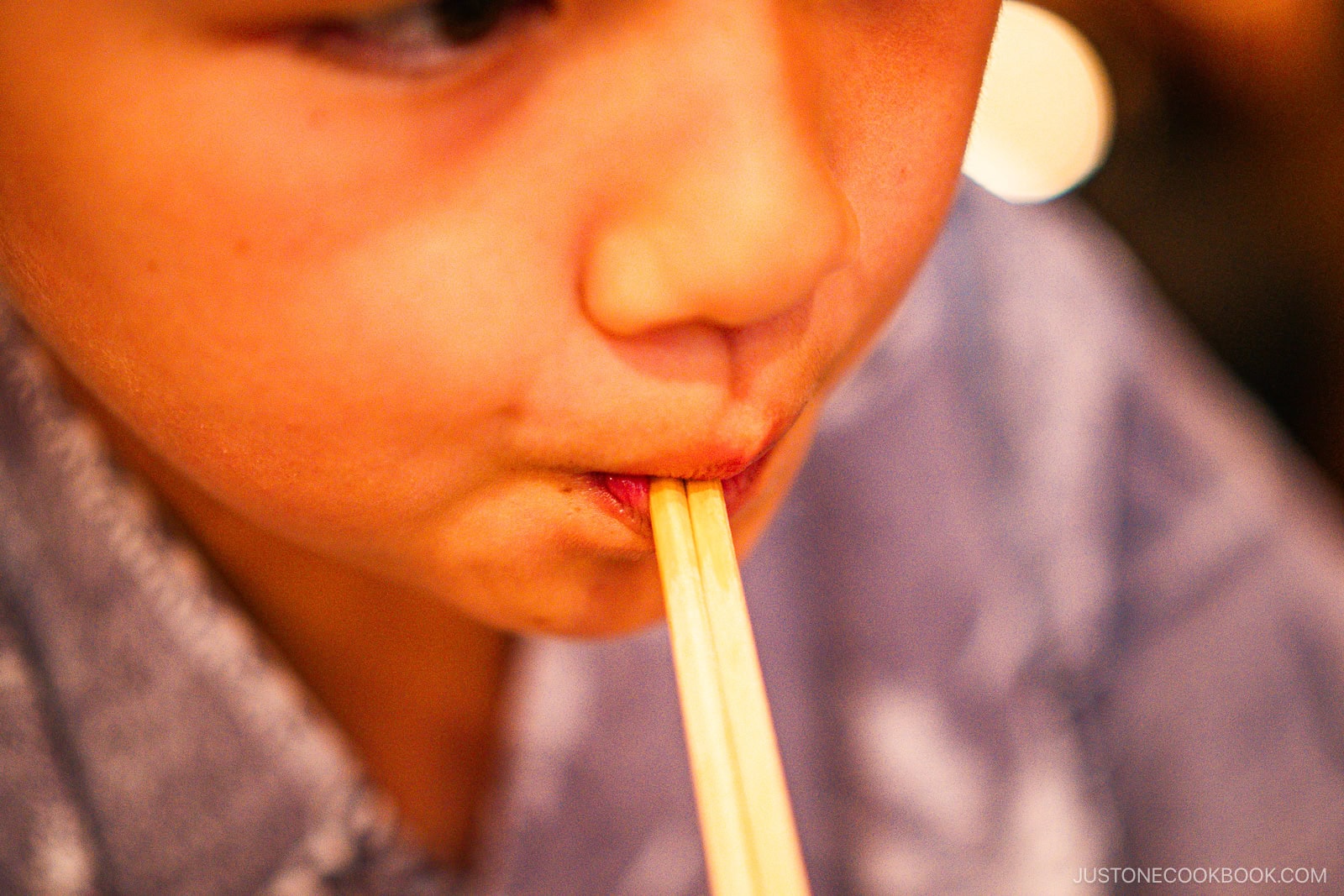
- Called neburi-bashi (ねぶり箸) in Japanese
- It’s considered impolite to lick, chew, or play with chopsticks.
- Use chopsticks with care and respect. Treat them as an extension of your hands.
- Wipe with a tissue or napkin if there are bits of rice on your chopsticks.
7. Do not rub wooden chopsticks together
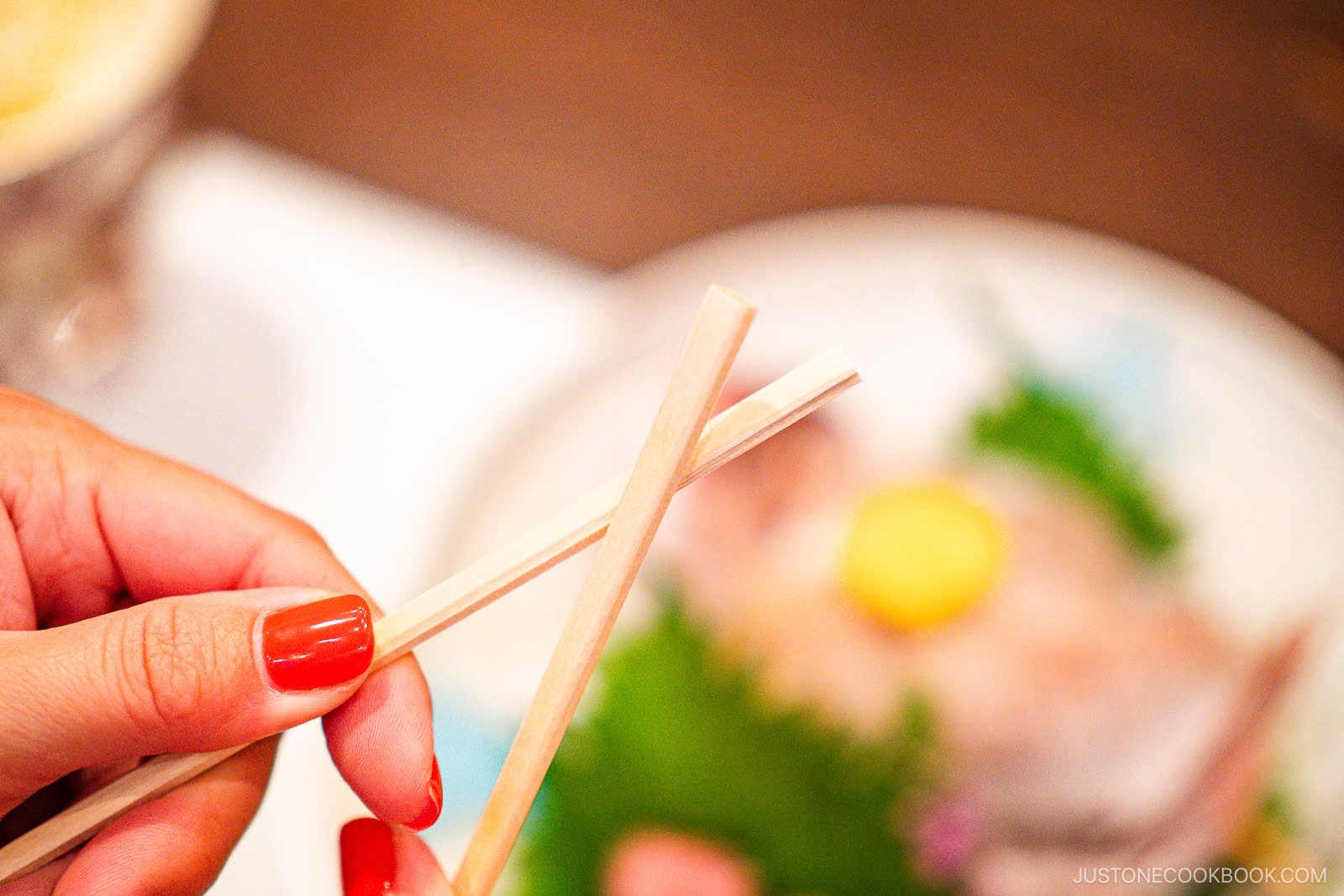
- It may insult the host or establishment if you rub disposable wooden chopsticks together to remove potential splinters.
- Chopstick rubbing implies they provided cheap and low-quality utensils.
- Instead, visually inspect wooden chopsticks for obvious splinters. Request a new pair, if needed.
Lifting Plates and Bowls: What’s Acceptable?
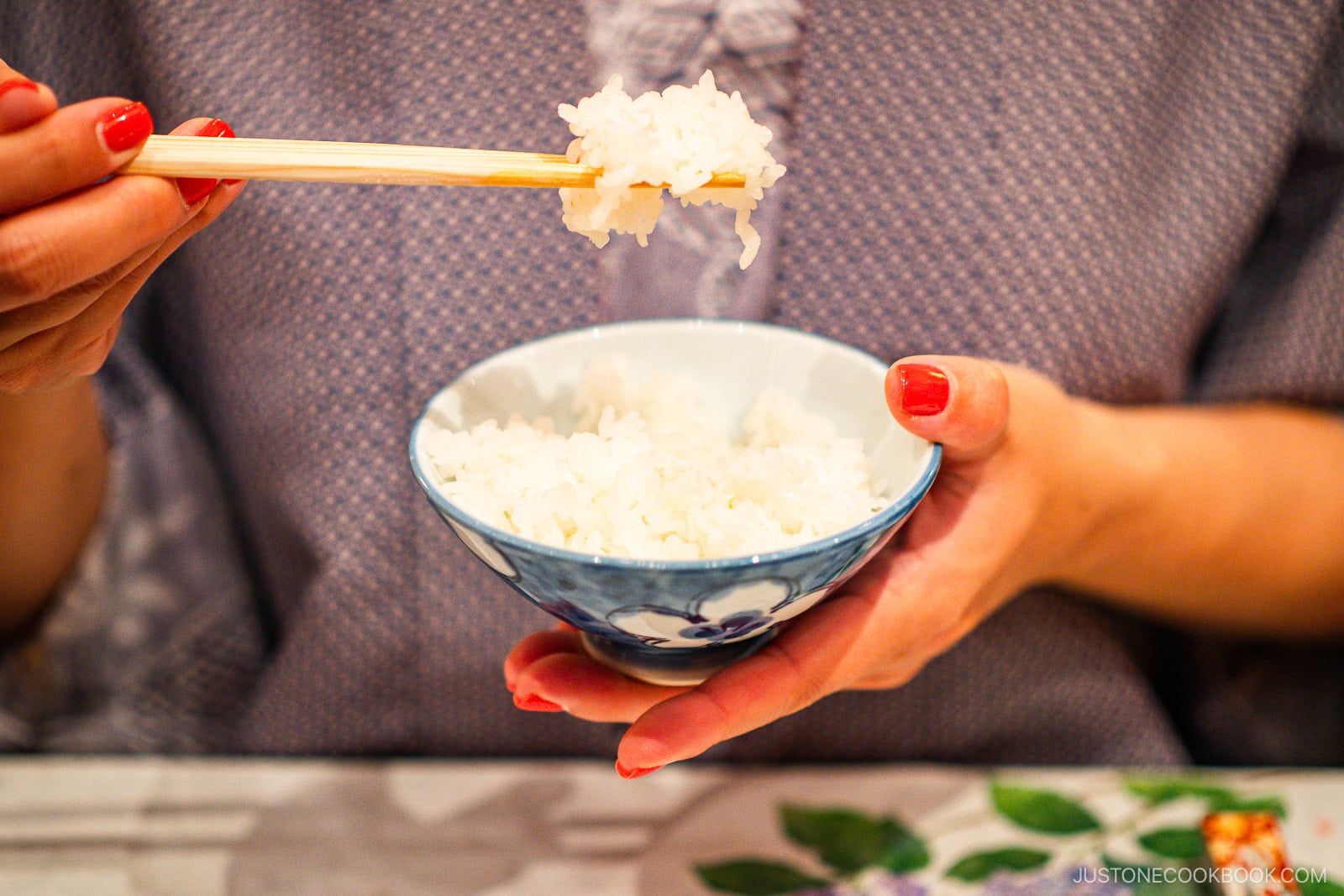
While you may have been taught not to lift bowls or plates near your face, it’s customary and perfectly acceptable in Japanese dining culture. Traditional Japanese meals are served on low tables with floor seating, so it’s practical to lift bowls to your mouth to avoid spills. Even in Western-style settings, it’s common to lift small bowls.
Below are some simple guidelines to follow.
🙆🏻♀️ Okay to Lift:
- Rice bowls
- Soup bowls
- Small dishes
- Donburi or ramen bowls
- Lacquerware boxes (jubako)
🙅🏻♀️ Do Not Lift:
- Sashimi plates
- Tempura plates
- Communal dishes – including shared plates and bowls
- Large plates or bowls – or anything bigger than the palm of your hand, except for donburi bowls and lacquered boxes
Sushi Dining Etiquette
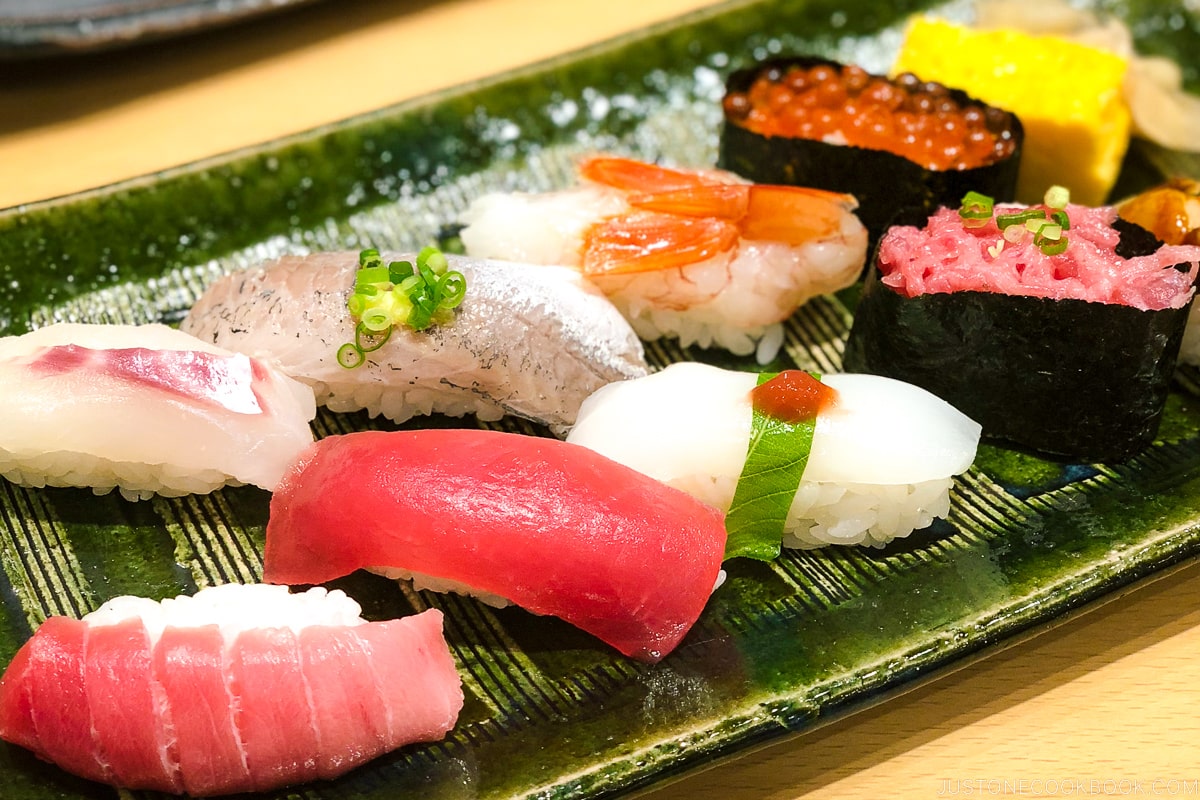
Dining on sushi comes with its own unique set of customs. Here are some basic questions you may have when sitting at the sushi bar.
1. Do I eat sushi with my fingers or chopsticks?
- Both are acceptable.
- According to some sushi masters, picking up sushi with your fingers makes nigiri sushi taste better and prevents the shari (sushi rice) from crumbling. However, this can leave you with sticky or fishy fingers.
- It’s up to your preference, so use whichever method you like.

2. Do I dip the fish or the sushi rice in soy sauce?
- Dip only the fish in soy sauce, not the rice. Sushi rice is already seasoned, so the soy sauce is for the fish.
- How-to: Pick up a piece of nigiri sushi, put it on its side, and lightly dip the fish into the soy sauce. This can be tricky. Do not dunk the entire slice of fish.
- Optional: If you’re worried about the sushi falling apart, you can always use your fingers (see above).
- Don’t dunk the entire sushi piece. Excess soy sauce will upset the balance of flavors between the fish and sushi rice. It will also make the rice soggy and fall apart.
- Pour only a small amount of soy sauce, and take just what you’ll use.
- Some sushi may not need soy sauce if they are already seasoned with salt or brushed with glaze. Listen to the sushi master or server for instructions, and ask if unsure.
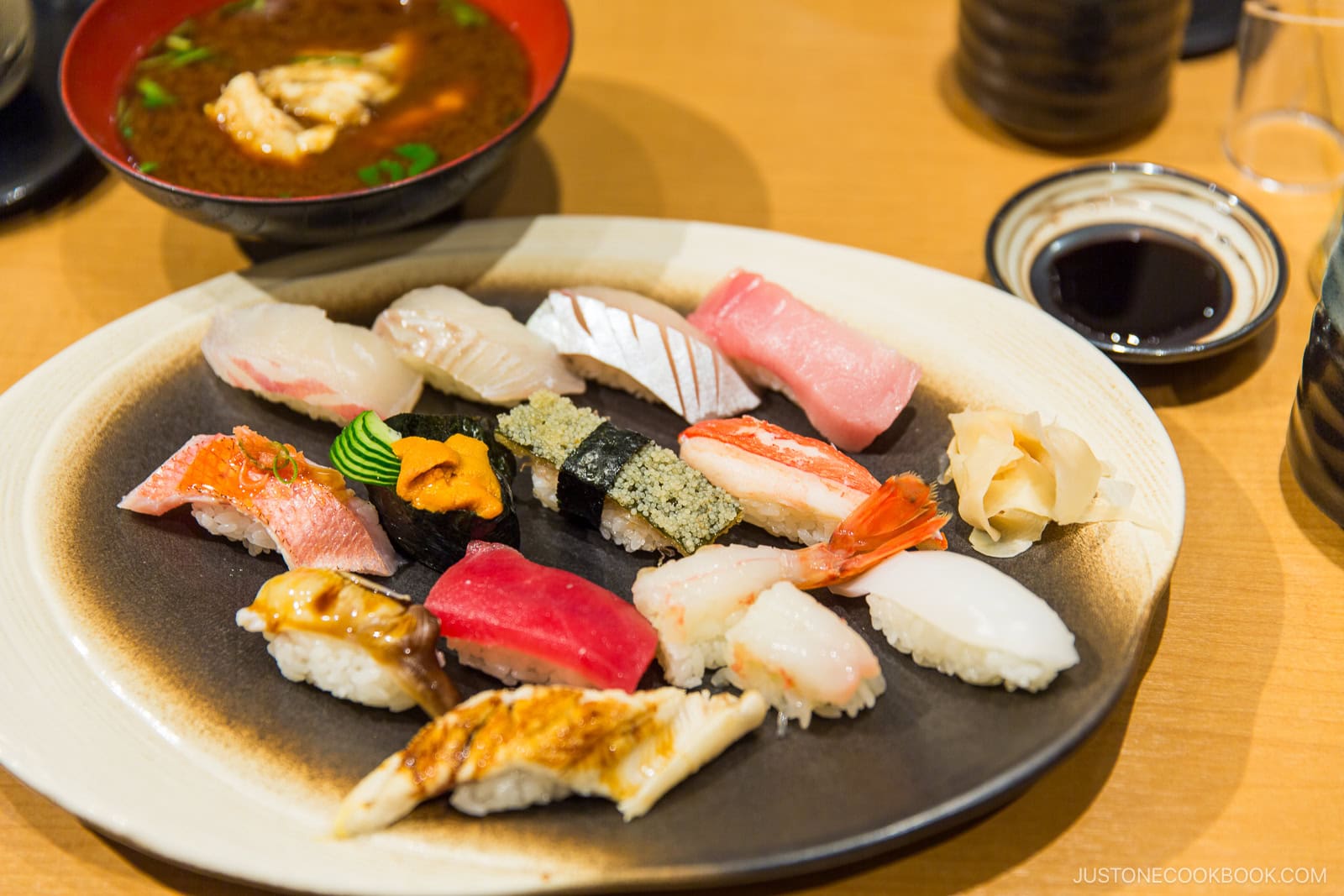
3. What’s the correct way to put wasabi on sushi?
- Add a small dab of wasabi (grated Japanese horseradish) to your sushi, then lightly dip the fish side into the soy sauce.
- Do not mix a slurry of wasabi and soy sauce; it looks messy.
- Don’t pile on the wasabi, as it will break the delicate balance of flavors between the fish and sushi rice.
- Never ask for more wasabi at a high-end sushi restaurant. This is a slap in the face for the sushi master. They have hand-grated authentic wasabi—an expensive product—and adjusted the right amount for each fish.
- Don’t use wasabi for a fiery kick. Real wasabi is fragrant and delicate, and it’s not meant to add serious heat. The imitation kind in tubes is made with regular horseradish and food coloring. It has a burning and strong aftertaste, so use it sparingly.
Drinking and Serving Alcohol in Japan
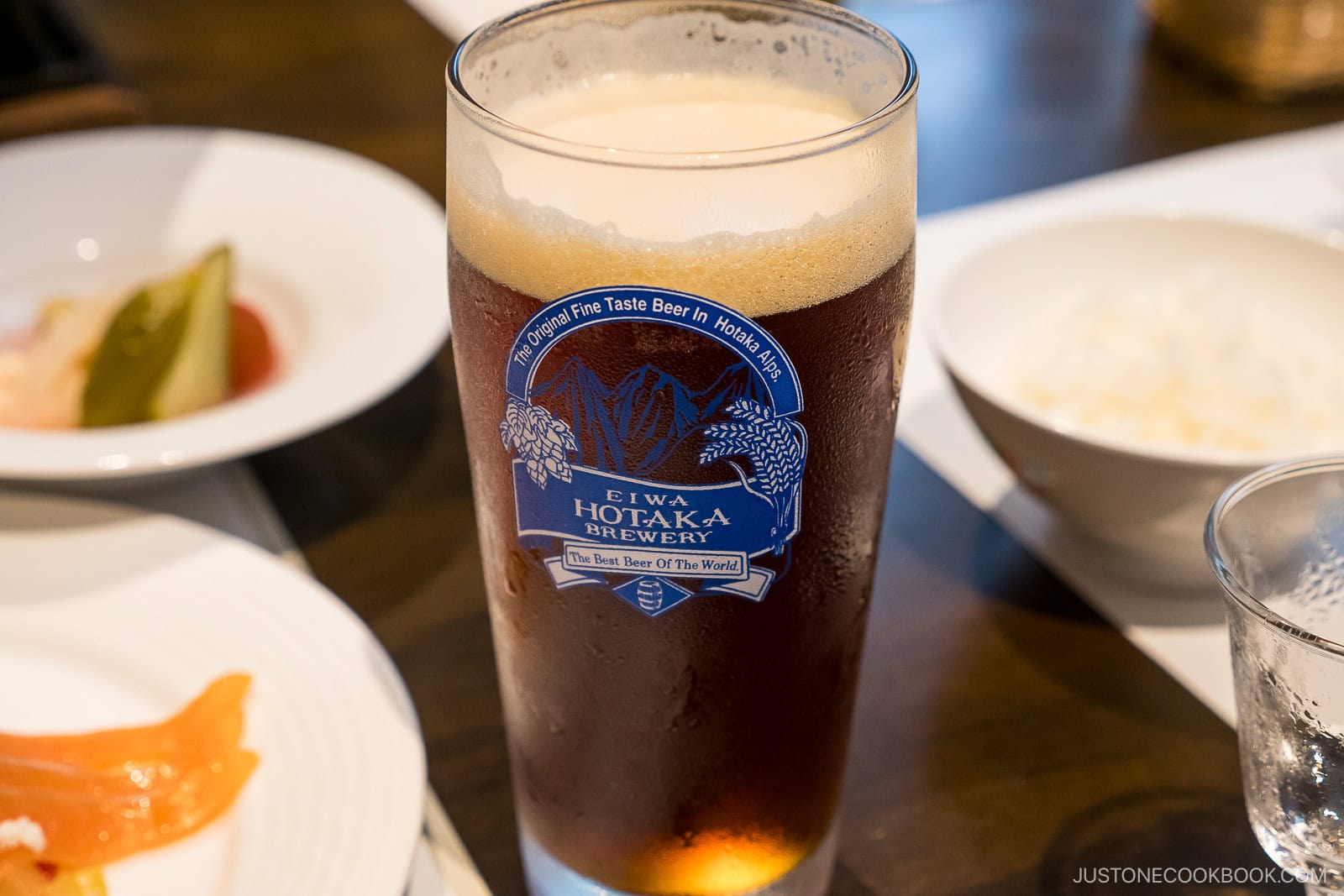
“Are you supposed to fill each other’s glasses but never your own?” This is a common question that we hear about Japanese drinking culture. Here, we address this and other situations you may encounter when enjoying alcoholic drinks in Japan.
- In a business setting, it’s a general rule to fill each other’s glasses. When offering a refill, ask your colleague first, and don’t pressure them into another drink. It’s OK to refuse a pour after a few rounds and refill your own instead.
- You may fill the glasses of the elders when you’re with family and friends.
- Among friends, you may pour your own to forgo the formalities. Keep it casual!
- Say “kampai” (cheers) during the first round of drinks. Afterward, you can refrain from saying it and drink at your own pace.
- Use both hands to hold and pour from a sake bottle, beer can, or decanter. This is a sign of respect toward the recipient. It’s considered bad manners to hold the drink vessel with only one hand.
Slurping Noodles: A Sign of Enjoyment
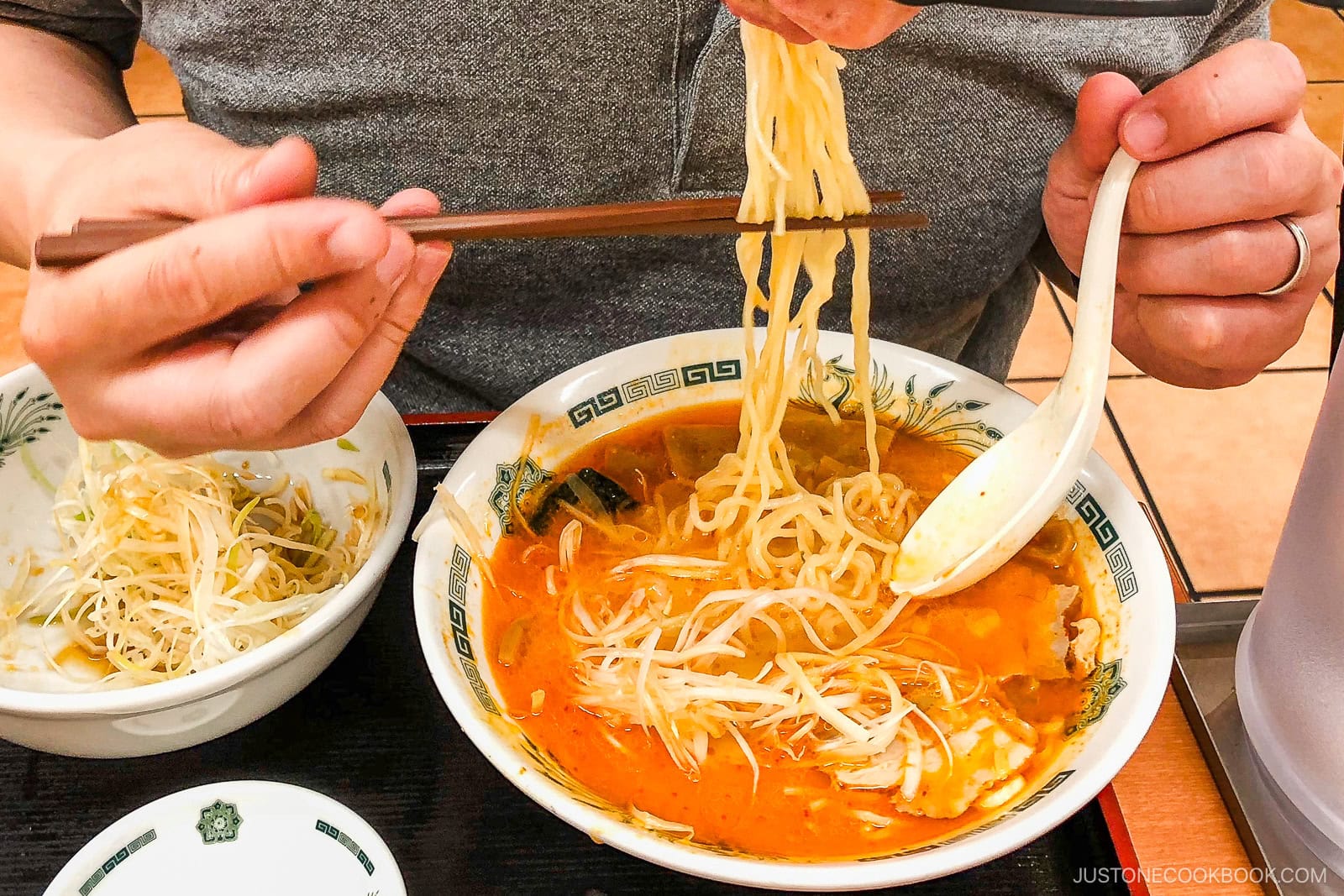
In Japan, slurping noodles is not only acceptable, it’s encouraged! Slurping is a common practice when enjoying a bowl of Miso Ramen, Soba Noodle Soup, or Udon Noodle Soup.
While some diners have expressed annoyance at loud slurping noises called nu-hara (ヌーハラ, short for “noodle harassment”), many Japanese noodle aficionados insist that slurping:
- enhances the flavor by aerating the noodles;
- cools down hot noodles before they reach your mouth; and
- amplifies the aroma of the broth as you eat.
Your Experience with Japanese Dining Etiquette
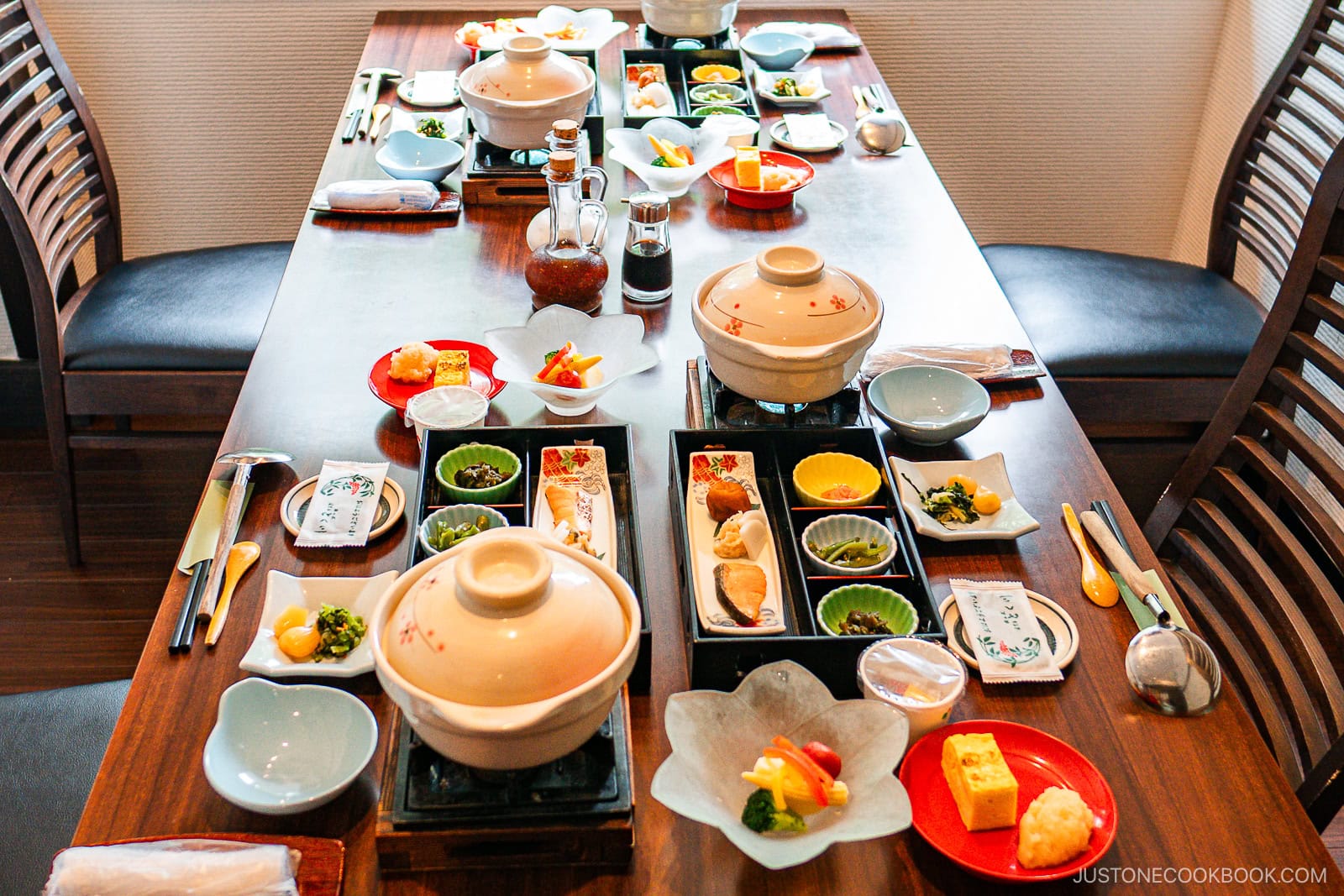
If you unintentionally commit a dining faux pas in Japan or while eating with Japanese friends—don’t panic! The key is:
- be respectful;
- observe those around you; and
- adjust accordingly.
Your effort to understand Japanese etiquette will always be appreciated, making you a thoughtful guest and a more confident diner.
Do you have a memorable story from dining in Japan—whether a cultural surprise, funny moment, or lesson learned? We’d love to hear about it! Share your thoughts and experiences in the comments below.
Editor’s Note: This post was originally published on June 23, 2018. It was updated and republished with more helpful information and new images on June 7, 2025.


